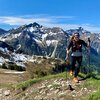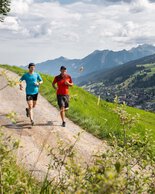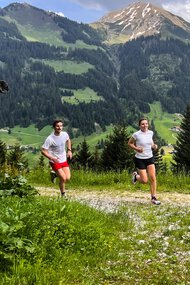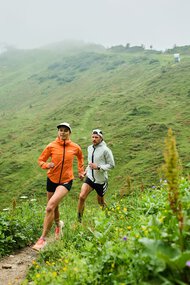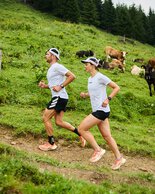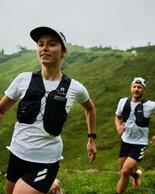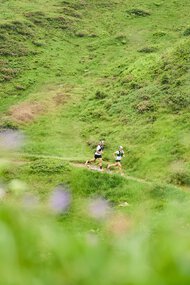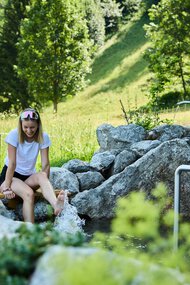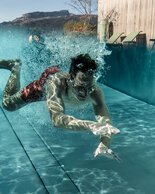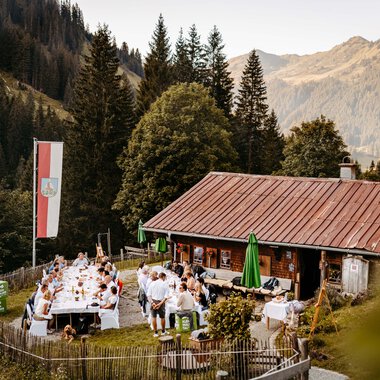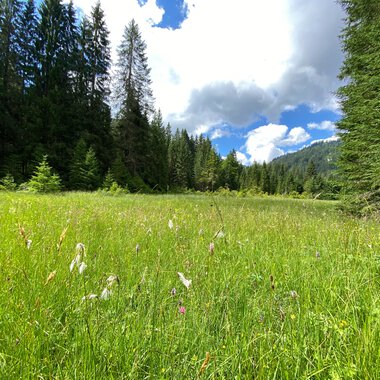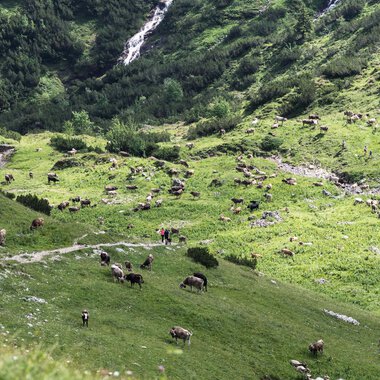Tired legs fit again - regeneration for trail runners & hikers
31.07.2022
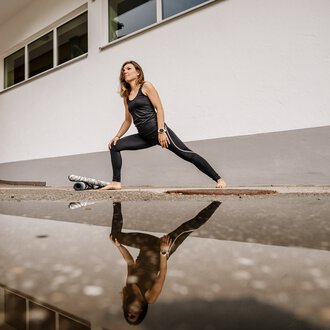
The summit is in sight. Activate the last of your strength, because you're almost there. At this moment, you forget that your legs are as heavy as lead, your lungs are burning and your pulse is pounding in your ears. You also forget that you have to get back down and that you have more tours planned for the next few days. The body wants a break. But your mind wants to go higher, to do more tours. After all, you're here to run in the mountains. Good regeneration is not that difficult if you keep a few things in mind. Here are five tips for BEFORE, DURING and AFTER running. How to turn mountain adventures into success stories for body, mind and soul.
Success in running depends on preparation 1. basic training
Doesn't sound exciting, but it's the truth. The most important training is also for trail runners: the foundation. Many runners think they always have to train fast and hard at the limit of their performance. For it to be effective, it has to hurt. But the truth is: basic training is the cornerstone for good endurance and ultimately for optimal regeneration. Walser trail runner Daniel Jochum agrees: “Every trail runner benefits considerably from further developing their basic training. Our fat metabolism works to a large extent through relaxed and slow running. This trains our body to function even more economically at higher intensities. And when has anyone ever said that the “easier” way is actually the better way?”.
when Trailrunning stay in Balance 2. Stable & mobile
The same applies here: preparation meets opportunity. If you do something for your mobility and stability, you will have fewer problems during and after the run, or in the best case no problems at all. Good stability is important so that you don't lose your balance on uneven terrain and can adapt quickly to changing conditions. Overloading of the knees, ankles, hips and back is often linked to poor body stability. In addition to stability training, mobility training should also become an integral part of training. This can help to prevent injuries.
Stretching after sport? A tip from a pro
Daniel Jochum also describes trail running as a sport that has high and variable training requirements. The body has to be very flexible, especially downhill. To optimally prepare the body for this and prevent shortening, you can work on this with yoga or static stretching exercises, for example. Stretching directly after running for better regeneration? Dynamic stretching in particular improves blood circulation, promotes the removal of metabolic products and therefore has a regenerative effect and complements other regeneration measures. However, it won't make you much more flexible in the long term. Tip: “To work on your mobility properly and in the long term, use rest periods”. He himself prefers to do this in the morning or in the evening before going to bed.
Try it now with our 7-minute yoga quickie for stability, mobilization and flexibility for trail runners and hikers. For every day or performed dynamically to regenerate after running.
Proper care during trail running 3. Recharge your batteries
You don't actually need much to start trail running. Neither a GPS watch nor a running backpack nor any other equipment. What is important, however, is a good and suitable shoe. Normal hiking shoes are too heavy and firm. Road running shoes are fine for the beginning and on easier trails and in good conditions. However, if it gets wet and roots and stones come into play, you should invest in proper shoes. If the routes become longer (more than 45-60 minutes), you should make sure you have enough water and top up your energy levels. For optimum regeneration, refuel during longer and more intensive sessions. The intake of carbohydrates during exercise (sports drink, bar, gel, dried fruit) replenishes the glycogen stores. This means that the muscle's stores are not depleted as much, resulting in less fatigue.
Giving your body a break from running 4. Take a breath
Trained athletes recover twice as quickly as untrained athletes. Nevertheless, it is important for everyone to give their body enough breaks. Maybe you've just started trail running and things are just going well. New outfit, great shoes, mountains, sunshine. What more could you want? It's easy to forget the two long tours of the previous days and that you already have 20 to 30 kilometers in your legs. Motivation is good, but so is mindfulness of your own body. The first longer runs in the mountains are very likely to have left you with sore muscles. For example, in your thighs from braking on the downhill. And all the other muscles that are in use also have to get used to the new strain. The end of the story: joints, ligaments and tendons have to absorb what the muscles can no longer do.
So give your body a break sooner rather than later and make it a slightly active one. For example, with a regenerative hike by the water or a day at the day spa with a low-intensity swim. Also great: cool your legs after running. For example, let your feet dangle in the water at one of the nature adventure spots in Kleinwalsertal.
The secret weapon for good regeneration 5. Sleeping and eating properly
“The most important regeneration tool is sleep and nutrition. It doesn't really depend on much else,” explains Daniel Jochum. In short, this means making sure you eat a balanced diet of wholesome foods in your everyday life. Immediately after sport, it means replenishing empty stores. The body needs fuel. The body has lost carbohydrates and minerals in particular. These should be replenished as quickly as possible. The best thing to do in the first 30 minutes is to have a snack, e.g. a fruit juice or banana, and drink plenty of fluids.
Daniel also believes that sleep is a more important tool for amateur athletes than massage guns or other equipment. After all, too little sleep or poor sleep means stress for the body and is closely linked to performance. It is therefore perhaps even the most important pillar of good regeneration. During these hours, the body can do everything it didn't have time for during the day. Perfect! Because in the cool mountain air of the Kleinwalsertal, you sleep really well even in summer.
